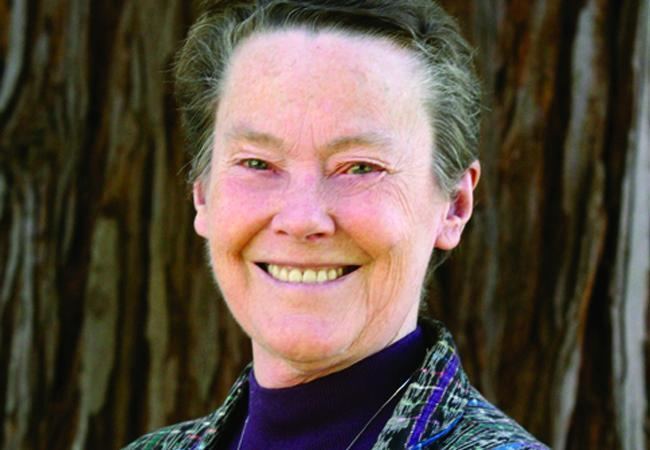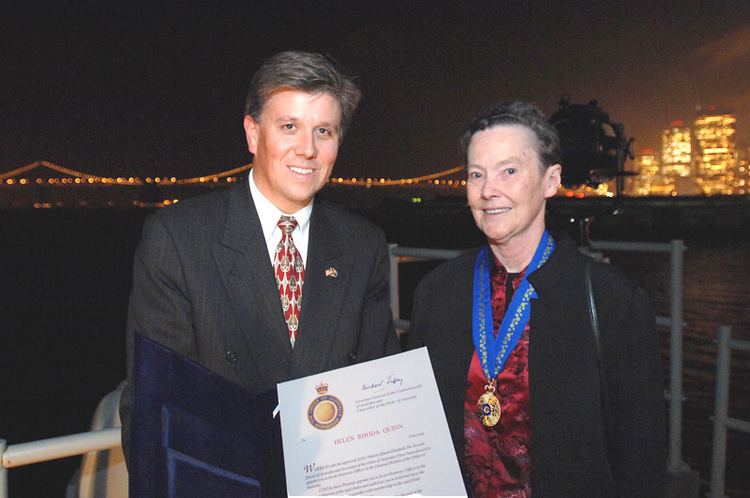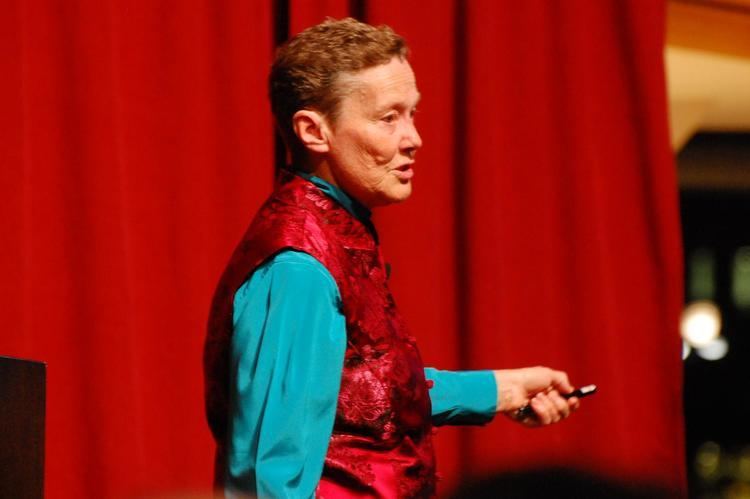Nationality American Occupation Particle physicist | Name Helen Quinn Role Physicist | |
 | ||
Born May 19, 1943 (age 82) ( 1943-05-19 ) Melbourne, Australia Board member of Board on Science Education of the National Research Council (of NAS) Books The Mystery of the Missing Antimatter | ||
Stem interview helen quinn professor emerita of physics stanford university
Helen Rhoda Arnold Quinn (born 19 May 1943 in Melbourne) is an Australian-born particle physicist and educator who has made major contributions to both fields. Her contributions to theoretical physics include the Peccei-Quinn theory which implies a corresponding symmetry of nature (related to matter-antimatter symmetry and the possible source of the dark matter that pervades the universe) and contributions to the search for a unified theory for the three types of particle interactions (strong, electromagnetic, and weak). As Chair of the Board on Science Education of the National Academy of Sciences, Quinn led the effort that produced A Framework for K-12 Science Education: Practices, Crosscutting Concepts, and Core Ideas —the basis for the Next Generation Science Standards adopted by many states. Her honours include the Dirac Medal of the International Center for Theoretical Physics, the Oskar Klein Medal from the Royal Swedish Academy of Sciences, appointment as an Honorary Officer of the Order of Australia, the J. J. Sakurai Prize for Theoretical Particle Physics from the American Physical Society, and the Karl Taylor Compton Medal for Leadership in Physics from the American Institute of Physics.
Contents
- Stem interview helen quinn professor emerita of physics stanford university
- Helen quinn the new framework for k 12 science education
- Life
- Professional Contributions
- Career
- Honours
- For the General Reader
- Education Publications
- Theoretical Physics
- References

Helen quinn the new framework for k 12 science education
Life

Quinn grew up in Australia and graduated in 1959 from Tintern Grammar, Tintern Church of England Girls' Grammar School, in Ringwood East, Victoria, Australia. She began college at the University of Melbourne before moving to the USA and transferring to Stanford University. She received her Ph.D. from Stanford in 1967, at a time when less than 2% of physicists were women. She did her postdoctoral work at the DESY (the German Synchrotron Laboratory) in Hamburg, Germany. She next spent seven years at Harvard University before returning to Stanford where she became a professor of physics at the Stanford Linear Accelerator Center. She retired in 2010 and devoted her efforts to education, especially K-12 and preschool science and multilingual education. She and her husband raised two children and have three grandchildren.
Professional Contributions
Working with Howard Georgi and Steven Weinberg, Quinn showed how the three types of particle interactions (strong, electromagnetic, and weak), which look very different as we see their impact in the world around us, become very similar in extremely high-energy processes and so might be three aspects of a single unified force.
With Roberto Peccei, she originated Peccei-Quinn theory, which suggested a possible near-symmetry of the universe (now known as Peccei–Quinn symmetry) to explain how strong interactions can maintain CP-symmetry (the symmetry between matter and antimatter) when weak interactions do not. One consequence of this theory is a particle known as the axion which has yet to be observed but is one candidate for the dark matter that pervades the universe.
She showed how the physics of quarks can be used to predict certain aspects of the physics of hadrons (which are particles made from quarks) regardless of the details of the hadron's structure (with Enrico Poggio and Steven Weinberg). This useful property is now known as quark-hadron duality.
She has given public talks in various countries on "The Missing Antimatter", in which she suggests that this area of research is promising.
In 2001, she was elected to become President of the American Physical Society for the year 2004. She was the fourth woman to be elected to the APS presidential line in the Society's 102-year history.
Quinn has had a long term engagement in education issues. She was a cofounder and the first president of the Contemporary Physics Education Project, and helped design its first product, the chart of Fundamental Particles and Interactions that appears on many schoolhouse walls next to the periodic table chart. CPEP received the 2017 "Excellence in Physics Education Award" from the American Physical Society, "for leadership in providing educational materials on contemporary physics topics to students for over 25 years."
She was elected to the National Academy of Sciences (NAS) while she was a staff member at the Stanford Linear Accelerator Center; she was soon made a full Professor of Physics at Stanford. As a member of NAS, she joined the Board on Science Education of the National Research Council and has served on a number of its studies. She served as Chair of this Board for the years 2009-14.
After retiring from Stanford, she spent her full effort on education. She planned and led the work of the NRC study committee that produced "A Framework for K-12 Science Education" (NRC, 2012) to guide the development of multi-state standards for science education. These "Next Generation Science Standards" were released in final form in April, 2013. NGSS has been officially adopted by many states and the District of Columbia. Since the release of the Framework, she has worked to support the ongoing process of development, adoption, and implementation of the NGSS. With Okhee Lee and Guadalupe Valdez, she studied the opportunities for teaching English to English language learners in the context of NGSS.
In 2015, the President of Ecuador appointed her as a member of the board (Comision Gestora) charged with leading the new National University of Education.
Career
Her professional career is as follows:,
